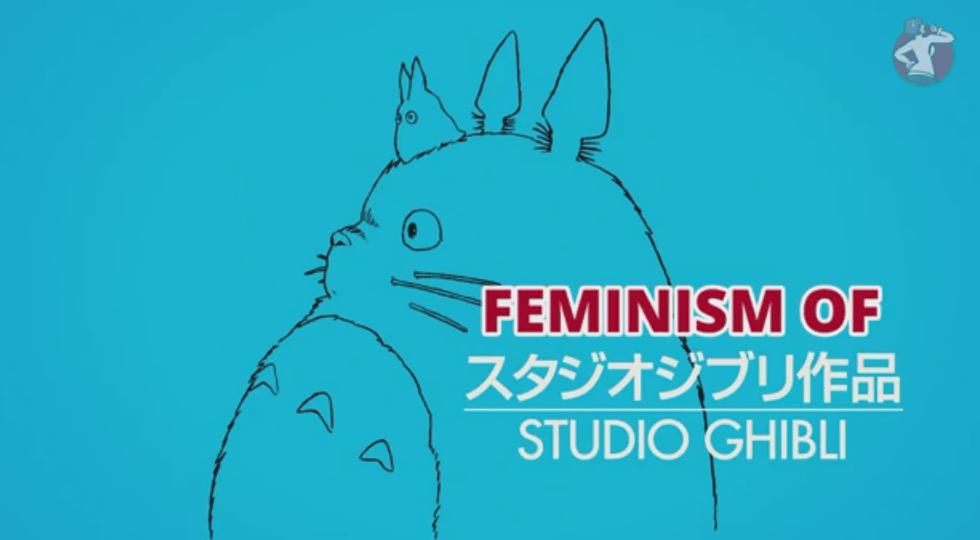[VIDEO] The Feminism of Studio Ghibli

Here’s our look at some of Hayao Miyazaki and Studio Ghibli’s awesome female protagonists! You can also check out a transcript below.
Hayao Miyazaki and Studio Ghibli’s animated films, whether they’re in a spirit world or real-life Japan, often share similar themes of nature preservation, the damages of imperialism, and childhood, often featuring a young girl in the lead.
Miyazaki and Ghibli’s female protagonists are complicated, flawed, and independent figures. Narratives that center around princesses can face a lot of scrutiny as they tend to revolve around marriage and romance as the ultimate aspiration for girls. In movies like Princess Mononoke (which, I should note, is not a fully child appropriate film), the title character, San, has her own story separate from the male lead, Ashitaka. San, a young woman raised by wolves, is aggressive, wild, and just really cool as she tries to defend the forest from destructive humans. In her encounters with Ashitaka, she’s headstrong but later on forced to confront her identity as a human. However, it never comes across as him saving her or taming her, but a relationship of mutual respect. Also, while the two grow close there’s never a compulsory need for them to end up together.
Princess Nausicaa is another such powerful leader-princess in the post-apocalyptic Nausicaa of the Valley of the Wind. These are some of his more dramatic and epic works, but you see the heroic girl in other films like Kiki’s Delivery Service when Kiki saves Tombo, or even Laputa, with it’s male-female duo.
It’s also notable that the female villains of these stories are just as complex and multidimensional as the protagonists. While it might’ve been easier to cast Lady Eboshi in Princess Mononoke as an evil symbol of industry and environmental destruction, we’d be ignoring the fact that she saves women from trafficking, takes in victims of leprosy, and is genuinely doing the best she can for her people. The film’s conflict isn’t resolved by killing Eboshi, as Ashitaka makes it a point to save her. Here, we see Miyazaki’s pacifism come out as peacekeeping, negotiation, and repair are the answer, not just slaying a dragon or beating a single enemy.
These morally ambiguous female villains appear again in films like Spirited Away, where Yubaba could also have been reduced to a greedy evil hag, trapping people and eating their parents, but she’s also motherly and just trying to run her business. It’s also clear that she operates under certain rules she can’t break. It’s the same with her sister, Zeniba.
I’ve only cited Miyazaki’s more fantastical works, but his slice-of-life stories are equally compelling and the characters are just as interesting. Whisper of the Heart features a young girl, Shizuku, who’s trying to figure out youth and romance. It’s a love story, but Shizuku has her own storyline and growth apart from her love interest. While he inspires her, her personal growth isn’t dependent on him. It’s her own initiative, writing talent, and imagination that push her forward. Only Yesterday is a similar story that shows a film doesn’t need fighting moves and completely avoiding love interests to be feminist, by telling a heartwarming story about a woman who decides to stop conforming to societal standards and chooses to make herself happy.
I’m only scratched the surface, as there are so many other fantastic characters in the worlds Studio Ghibli has created. I’m glad I got to grow up with these films, and I’ve always admired how Miyazaki doesn’t shy away from weakness in his characters, but he doesn’t ever let it define them either.
—Please make note of The Mary Sue’s general comment policy.—
Do you follow The Mary Sue on Twitter, Facebook, Tumblr, Pinterest, & Google +?
Have a tip we should know? [email protected]